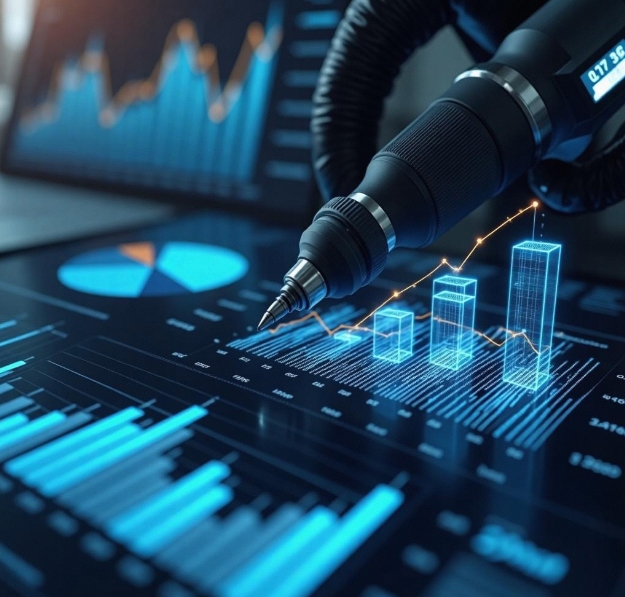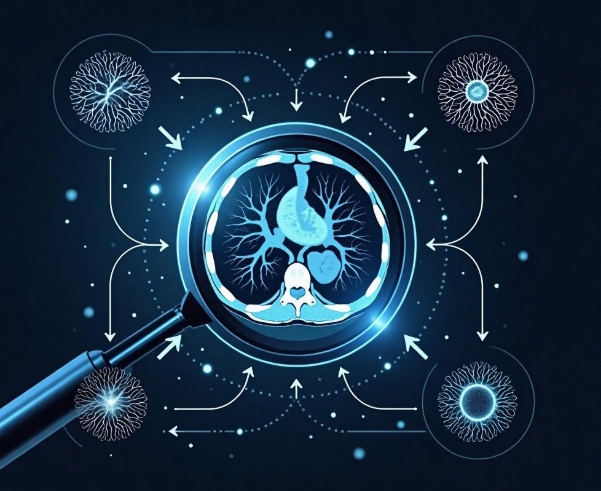How to Use Artificial Intelligence for Image Recognition and Processing
- latest articles
- 1.DApp Development & Customization: Merging Diverse Market Needs with User Experience 2.Analysis of the Core Technical System in DApp Project Development 3.How to achieve cross-chain interoperability in Web3 projects? 4.How does the tokenization of points reconstruct the e-commerce ecosystem? 5.How to Set and Track Data Metrics for a Points Mall? 6.What is DApp Development? Core Concepts and Technical Analysis 7.Inventory of commonly used Web3 development tools and usage tips 8.Development of a Distribution System Integrated with Social E-commerce 9.Six Key Steps for Businesses to Build a Points Mall System 10.What is DApp Development? A Comprehensive Guide from Concept to Implementation
- Popular Articles
- 1.Future Trends and Technology Predictions for APP Development in 2025 2.Analysis of the DeFi Ecosystem: How Developers Can Participate in Decentralized Finance Innovation 3.From Zero to One: How PI Mall Revolutionizes the Traditional E-commerce Model 4.DAPP Development | Best Practices for Professional Customization and Rapid Launch 5.Recommended by the Web3 developer community: the most noteworthy forums and resources 6.From Cloud Computing to Computing Power Leasing: Building a Flexible and Scalable Computing Resource Platform 7.How to Develop a Successful Douyin Mini Program: Technical Architecture and Best Practices 8.Shared Bike System APP: The Convenient Choice in the Era of Smart Travel 9.How to Create a Successful Dating App: From Needs Analysis to User Experience Design 10.From Design to Development: The Complete Process of Bringing an APP Idea to Life
With the rapid development of artificial intelligence technology, image recognition and processing have become important research directions in the AI field. Image recognition and processing not only play a crucial role in industries such as manufacturing, healthcare, and security but also have a profound impact on our daily lives. From facial recognition on smartphones and obstacle detection in autonomous vehicles to automated diagnosis in medical imaging and abnormal behavior detection in surveillance systems, image recognition technology is ubiquitous. This article will introduce how to use artificial intelligence for image recognition and processing and explore its applications and development trends.
1. Overview of AI Image Recognition Technology
Image recognition refers to the process by which computers analyze image content through algorithms to identify specific objects, text, scenes, or actions. AI-based image recognition technology primarily involves computer vision, deep learning, and neural networks, among other related technologies. Computer vision enables computers to "understand" images through algorithms and make corresponding judgments and processing, while deep learning improves the accuracy of image recognition by simulating the neural network structure of the human brain for data training.
1.1 Basic Principles of Computer Vision
The core task of computer vision technology is to enable computers to possess perception capabilities similar to human vision by analyzing information in digital images or videos. The basic principles of computer vision include image acquisition, image preprocessing, feature extraction, pattern recognition, and post-processing. Each step plays a vital role in the accuracy of image recognition.
1.2 Application of Deep Learning in Image Recognition
Deep learning simulates the operational mechanisms of human brain neurons through neural networks, enabling computers to automatically extract features from large amounts of image data and perform classification. Among deep learning models, Convolutional Neural Networks (CNNs) are the most commonly used, particularly excelling in the field of image recognition. Through multiple layers of convolution and pooling operations, CNNs can effectively extract hierarchical features from images, allowing computers to identify various objects in complex images.
2. Applications of AI in Image Recognition
2.1 Facial Recognition
Facial recognition is one of the most representative and widely applied areas of image recognition technology. With the continuous improvement of facial recognition algorithms, more and more companies and institutions are adopting this technology for identity verification, payment security, and other operations. Through computer vision and deep learning technologies, AI can accurately identify and verify individual facial information.
Modern facial recognition technology typically employs Convolutional Neural Networks (CNNs) to extract facial features. By analyzing various facial details such as eyes, nose, and mouth, CNNs can quickly determine a person's identity. Facial recognition technology is widely used in smartphones, access control systems, and airport security checks.
2.2 Image Recognition in Autonomous Driving
One of the core components of autonomous driving technology is image recognition. Autonomous vehicles need to capture images and data of the surrounding environment through sensors such as cameras, radar, and LiDAR, and use AI algorithms for real-time analysis to identify traffic signs, pedestrians, other vehicles, and road conditions. Image recognition plays a crucial role in autonomous driving, enabling vehicles to "understand" the road environment and achieve autonomous navigation.
In autonomous driving, image recognition technology often uses Convolutional Neural Networks (CNNs) from deep learning for object detection and recognition. CNN models can learn from vast amounts of traffic scene images to identify important objects such as cars, pedestrians, and traffic lights. Additionally, by integrating multimodal data from sensors, AI can enhance recognition accuracy and robustness, ensuring the safe operation of autonomous vehicles.
2.3 Medical Image Analysis
Medical image analysis is one of the significant applications of AI image recognition. Medical images such as X-rays, CT scans, and MRI images provide rich information about diseases, but traditional manual analysis is time-consuming and prone to errors. Using artificial intelligence, particularly deep learning technology, AI can quickly identify lesions and analyze abnormalities in vast amounts of medical images, assisting doctors in making accurate diagnoses.
By training deep neural network models such as CNNs, AI can identify abnormalities like tumors, vascular blockages, and pneumonia in medical images. AI not only improves diagnostic accuracy but also enhances doctors' efficiency, enabling early detection of potential diseases and providing timely treatment recommendations for patients.
2.4 Security Surveillance and Abnormal Behavior Detection
In the field of public safety, AI-based image recognition technology is also widely applied. By installing cameras and integrating AI systems, surveillance systems can analyze video streams in real time to identify specific individuals, suspicious behaviors, or potential threats. This technology is used in airports, shopping malls, transportation hubs, and other locations to enhance public safety.
Using deep learning, particularly Convolutional Neural Networks (CNNs), AI can identify key targets in surveillance videos, such as crowd density, fights, falls, and other abnormal behaviors. Additionally, AI can perform real-time analysis and alerts in large-scale video surveillance, reducing the burden on manual monitoring.
3. Techniques and Methods of AI Image Processing
In addition to image recognition, artificial intelligence also plays a significant role in image processing. Image processing involves transforming, optimizing, and analyzing images to achieve specific goals. AI image processing technologies encompass areas such as image enhancement, denoising, image restoration, and style transfer.
3.1 Image Enhancement and Denoising
Image enhancement involves adjusting parameters such as contrast, brightness, and saturation to make the visual effect of an image clearer and more detailed. This technique is particularly important in low-light or high-noise environments.
Denoising refers to the removal of unnecessary noise or interference from an image to improve its quality. Deep learning is especially adept at denoising tasks. By training neural network models, AI can effectively identify and remove noise from images, restoring their true details.
3.2 Image Restoration
Image restoration is a technique that repairs damaged or missing parts of an image to restore it to its original state. Using artificial intelligence, particularly Generative Adversarial Networks (GANs), AI can generate plausible pixels in damaged areas to repair images. Whether restoring old photographs or natural landscapes, AI can produce high-quality restoration results by learning from large datasets of images.
3.3 Style Transfer
Style transfer is a technique that applies the style of one image to another. For example, transforming an ordinary photo into a style resembling Van Gogh or Picasso. By learning the features of different artistic styles, AI can apply these characteristics to other images, creating highly artistic works.
4. Challenges and Future of AI Image Recognition and Processing
4.1 Continuously Improving Recognition Accuracy
Although artificial intelligence has made significant progress in image recognition, challenges remain in achieving high accuracy in complex environments. Factors such as lighting changes, image blur, and occlusions can affect recognition performance. In the future, AI image recognition technology needs to continuously improve algorithms to enhance robustness and accuracy in complex scenarios.
4.2 Demand for Computational Resources
Image recognition and processing require substantial computational resources, especially for training Convolutional Neural Network (CNN) models in deep learning, which demand large amounts of image data and computing power. Therefore, reducing computational costs and improving efficiency are critical challenges for AI image processing technology.
4.3 Privacy and Ethical Issues
With the widespread adoption of image recognition technology, privacy and ethical concerns have sparked extensive discussion. For example, the misuse of facial recognition technology could lead to privacy breaches, and the proliferation of surveillance systems may raise concerns about personal freedom. Therefore, ensuring the reasonable use of AI technology while maintaining security is a key issue for future development.
Conclusion
The application prospects of artificial intelligence in image recognition and processing are vast, covering fields from facial recognition and autonomous driving to medical image analysis. As technology continues to advance, the accuracy and efficiency of AI image recognition and processing will keep improving, bringing more convenience to society. However, we must also address the challenges posed by the technology, such as privacy protection and computational resource consumption. Only by resolving these issues can AI image recognition and processing achieve greater application value across broader domains.
-

How does artificial intelligence technology transform the operational models of modern enterprises?
In the wave of the digital era, artificial intelligence (AI) technology has tran···
-

How to Utilize Artificial Intelligence for Precision Medicine and Health Management
With the rapid advancement of technology, artificial intelligence (AI) has demon···
-

Integration and Application of Artificial Intelligence and Robotics
In today's era of rapid technological advancement, the integration of artificial···

 Blockchain
Blockchain












